
June marks the arrival of Japan’s iconic summer flowers in full bloom. Hydrangeas enchant with their changing hues, and irises, once revered in ukiyo-e art, glisten in the rain. Discover five Tokyo locations to admire these natural treasures.
1. Asukayama Park
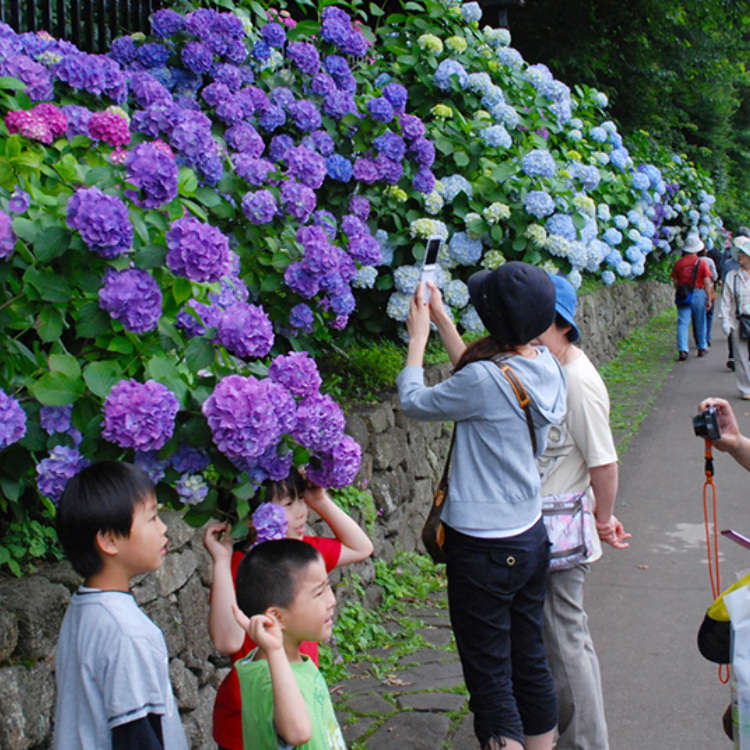
Although known for being a famous sakura cherry blossom spot since long ago, hydrangeas also beautifully bloom in June at this park.
Hydrangeas grow on the east side of Asukayama Park, 1,300 of the plants blooming along "Asukanokomichi," a narrow path along the rails of JR Oji Station. They are planted on the surface to the side of the course so that you can view them up close.
Also, within Asukayama Park, there is a museum that presents the history, nature, and culture of Kita-ku and a museum all about paper.
-

-
Address
1, Oji, Kita-ku, Tokyo, 114-0002
View Map -
Nearest Station
Oji Station (JR Keihin-Tohoku Line / Tokyo Metro Namboku Line)
1 minute on foot
- Phone Number 03-3908-9275
-
Address
1, Oji, Kita-ku, Tokyo, 114-0002
2. Shinobazu Pond (Ueno Park)
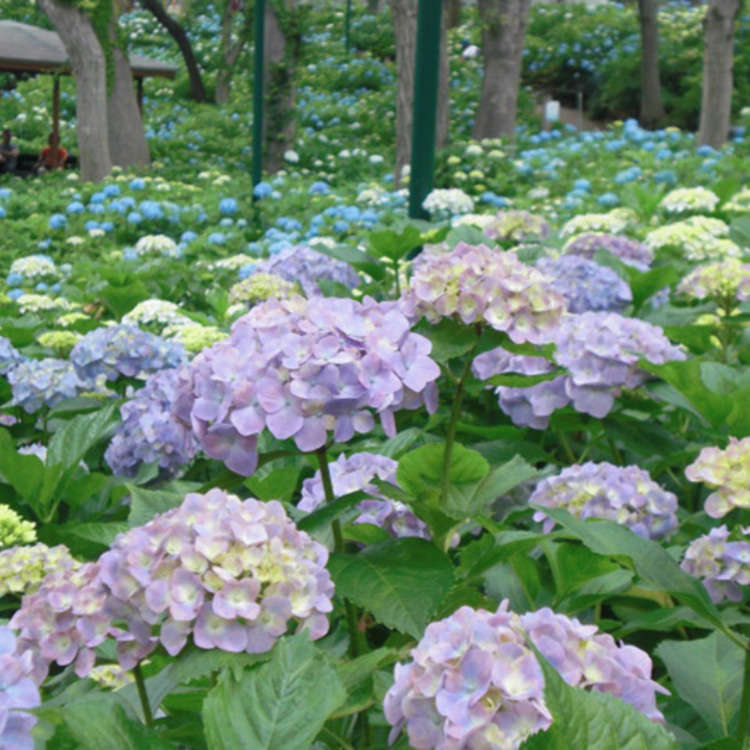
From early May every year, around Ueno Park, hydrangea start to bloom, and you can enjoy colorful flowers until early July. You can also walk around Shinobazu-dori Ave., which is lined by beautiful hydrangea.
-

-
Address
Uenokouen, Taitou-ku, Tokyo, 110-0007
View Map -
Nearest Station
Keisei Ueno Station (Keisei Main Line / Narita SKY ACCESS Line)
2 minutes on foot
- Phone Number 03-3828-5644
-
Address
Uenokouen, Taitou-ku, Tokyo, 110-0007
3. Hakusan-Jinja Shrine

Hakusan-Jinja of Bunkyo-ku and the adjacent park Hakusan-Park have around 3,000 Ajisai growing, and from early June to mid-June, the Hakusan-Jinja Ajisai Festival is being held.
Besides booths selling all sorts of beautiful hydrangeas, there are also many food stalls serving delicious snacks to visitors. There are also various events taking place on the festival's Saturdays and Sundays, such as small concerts.
Hakusan Shrine is famous for another particular thing: the shrine is believed to cure toothache, and on the 11th as well as on the 18th of June, both Sundays, a toothbrush memorial service is being held!
-

-
Address
5-31-26, Hakusan, Bunkyo-ku, Tokyo, 112-0001
View Map -
Nearest Station
Hakusan Station (Toei Mita Line)
-
Address
5-31-26, Hakusan, Bunkyo-ku, Tokyo, 112-0001
4. Koishikawa Kōrakuen Gardens
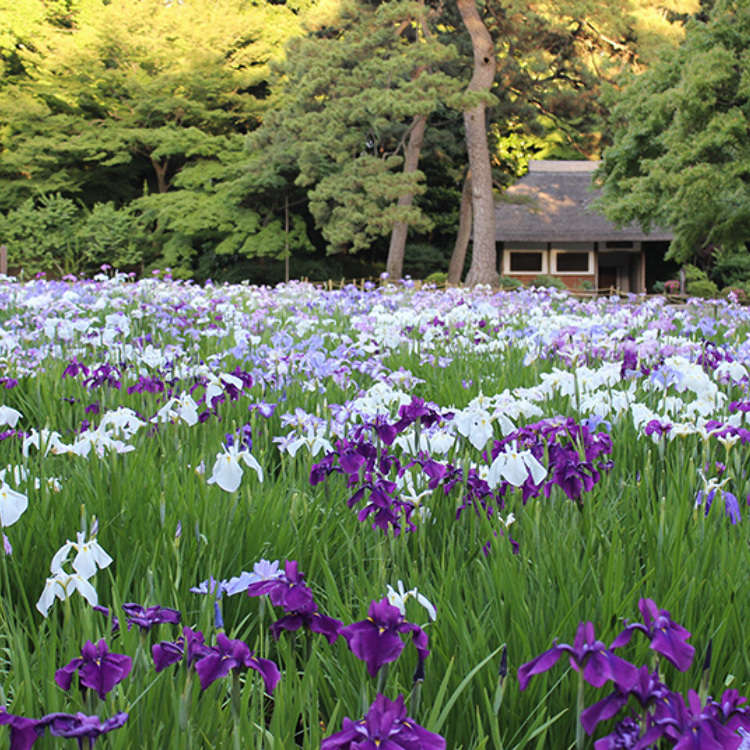
One of the most influential feudal lords of the Edo period (1603 ~ 1886), Tokugawa Yorifusa, commissioned a Japanese garden in 1629 that his son, Tokugawa Mitsukuni, then completed. Today, the beautiful garden is under the management of the City of Tokyo.
In the 70,000 square meters of the vast park blossom, various seasonal flowers, the around 700 Hanashobu, Japanese irises, blooming from the end of May to mid-June, are a magnificent sight to behold.
The wooden footpath built during this period lets visitors experience the flowers up close. Right next to the garden lies Tokyo's very first roofed stadium, Tokyo Dome.
-

-
Address
1, Kouraku, Bunkyo-ku, Tokyo, 112-0004
View Map -
Nearest Station
Iidabashi Station (JR Chuo Main Line / Tokyo Metro Tozai Line / Tokyo Metro Yurakucho Line / Tokyo Metro Namboku Line / Toei Oedo Line)
8 minutes on foot
- Phone Number 03-3811-3015
-
Address
1, Kouraku, Bunkyo-ku, Tokyo, 112-0004
5. Koiwa Iris Garden
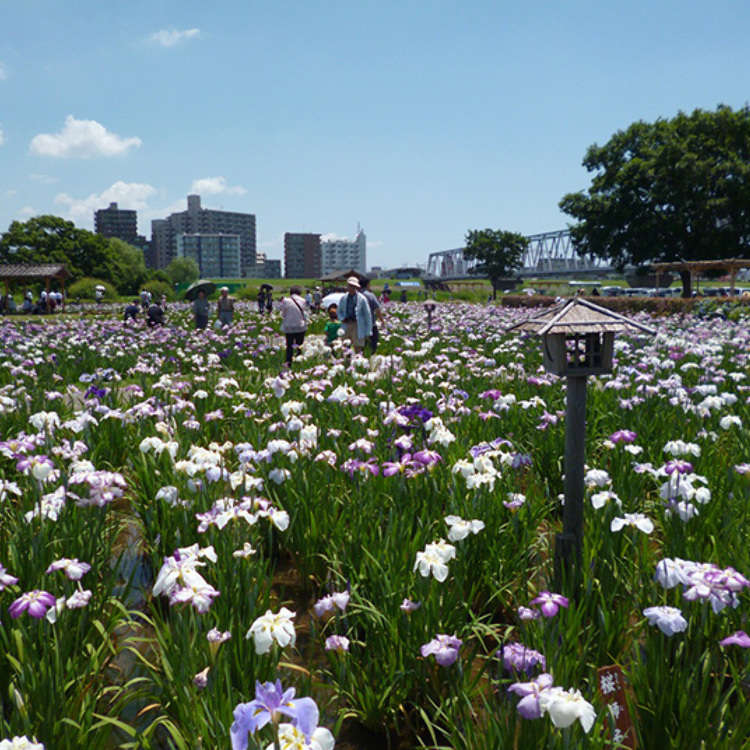
On the banks of the Edogawa River, flowing through the same-named district of Edogawa-ku, lies Koiwa Iris Garden, or Koiwa Shobuen.
The 50,000 irises that blossom here between late May and June have become a metropolitan attraction. The many irises were donated by residents one after the other, and Edogawa-ku has slowly expanded the park until it has become a full circle-style garden. This round shape is one typical form of Japanese garden, created to allow visitors to appreciate the grounds in their entirety by being able to circle it completely.
Feel free to stroll along the circle path leisurely and enjoy the magnificent sight of a sea of blue irises.
-

-
Address
4, Kitakoiwa, Edogawa-ku, Tokyo, 133-0051
View Map -
Nearest Station
Edogawa Station (Keisei Main Line)
-
Address
4, Kitakoiwa, Edogawa-ku, Tokyo, 133-0051
- Area
- Category
*Prices and options mentioned are subject to change.
*Unless stated otherwise, all prices include tax.
Popular Tours & Activitiess
Recommended places for you
-
Ad

Okinawa Travel Troubles? Guide to the MCC Hotline for Illness and Weather Emergencies
-

A Don Quijote Like No Other: Step Inside the All-New Tourist-Friendly Store at Shinjuku Tonanguchi Bekkan
by: Chehui Peh
-

(12% OFF KKday Coupon) Mt. Fuji Autumn Leaves, Powder Snow & More! 15 Best Tours to Experience Japan in Fall & Winter
-

The Ultimate Guide to Mitsui Outlet Parks in Japan (2025 Edition) - Popular Tax-Free Malls & Coupon Info for Travelers
-

Fine Dining on Rails? Japan Announces Stunning NEW 'Laview' Restaurant Train
-
Ad
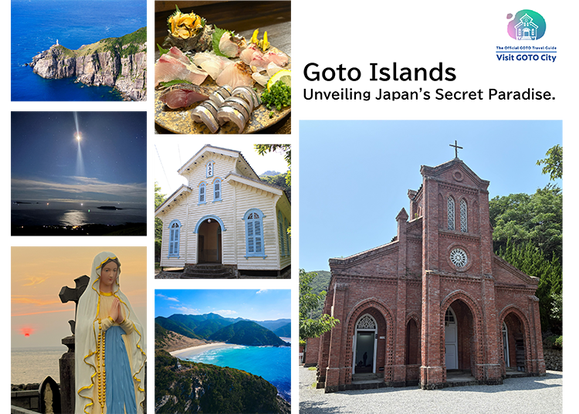
Walk in the Footsteps of Believers: A 4-Day Pilgrimage Across Goto City
by: Yohei Kato
Inspiration for Accommodations
-

Enjoy Mt. Fuji from the Comfort of Your Room! Recommended Ryokan with Mt. Fuji View
-

Stay Near the Cherry Blossoms! Hotels for Cherry Blossom Viewing in Tokyo
-

Family-Friendly Hotels with Free Shuttle to Disneyland: Convenient Access for a Magical Stay
-

Top Ranked Hakone Hotels with Mt. Fuji View: Enjoy Stunning Scenery from Your Private Space
-

Convenient Tokyo Hotels with Airport Shuttle: Ideal for Families and Heavy Luggage
-

Stunning Tokyo Tower View Hotels: Enjoy Spectacular Scenery from Your Private Space
-

Convenient Asakusa Hotels with Kitchens: Ideal for Extended Family Visits
-

Experience Luxury: Hakone's 10 Best Five-Star Accommodations
-

Enjoy Mt. Fuji Autumn Leaves! Top Hotels Near the Popular Autumn Leaves Corridor
-

Experience Hakone Fall Foliage from Your Room with Stunning Views
-

Autumn in Japan 2025: Fall Foliage Forecast & Where to Enjoy the Colorful Leaves (+Tour Info)
-

18 Things to Know About Visiting Japan in Summer: Weather, What to Do & More
-

Tokyo Roppongi|Roppongi Station Area Map & Sightseeing Information
-

Tokyo Train Map: Your Essential Guide to Subways and Railways
-

Have the Perfect Summer in Tokyo: Fun Things to Do, Eat & More
-

Tanabata Festival: Experience the Magic of Japan's Star-Crossed Lovers
- #best ramen tokyo
- #what to buy in ameyoko
- #what to bring to japan
- #new years in tokyo
- #best izakaya shinjuku
- #things to do tokyo
- #japanese nail trends
- #what to do in odaiba
- #onsen tattoo friendly tokyo
- #daiso
- #best sushi ginza
- #japanese convenience store snacks
- #best yakiniku shibuya
- #japanese fashion culture
- #best japanese soft drinks




















